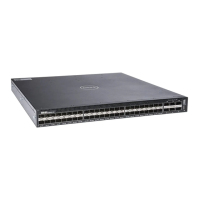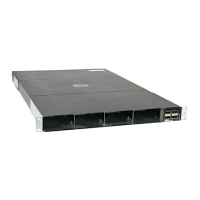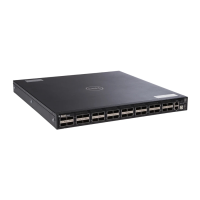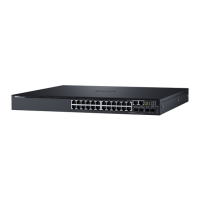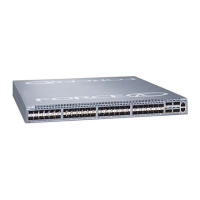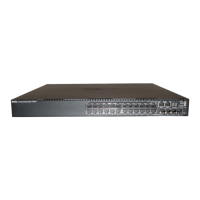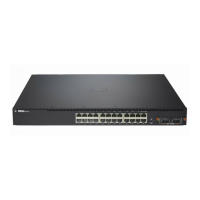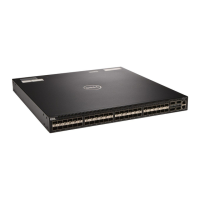
Do you have a question about the Dell Networking S4810 and is the answer not in the manual?
| Switching Capacity | 1.28 Tbps |
|---|---|
| Forwarding Rate | 960 Mpps |
| Rack Units | 1U |
| Power Supply | Dual, Hot-swappable |
| Form Factor | Rack-mountable |
| Jumbo Frame Support | Yes |
| Ports | 48 x 10GbE SFP+ |
| Product Type | Switch |
| MAC Address Table Size | 128K |
| Operating Temperature | 0°C to 40°C |
| Storage Temperature | -40°C to 70°C |
| Humidity | non-condensing |
Defines the intended readers for this configuration guide.
Outlines the specifications and firmware requirements for the switches.
Illustrates the recommended physical connection between servers, switches, and storage arrays.
Steps for powering on and physically connecting the switches.
Commands to reset the switch to factory defaults by deleting the startup configuration.
Steps to set up an out-of-band management interface for network access.
Optional configuration to set a management route for the OOB port.
Sets up username and password for switch access.
Commands to enable individual or multiple switch ports.
Configures the MTU size to 12000 for Jumbo Frames.
Sets up flow control parameters for the switch ports.
Configures Spanning Tree Protocol (RSTP) for edge ports.
Configures a port channel for Link Aggregation Group (LAG).
Assigns 40Gb QSFP ports to the port channel for LAG.
Command to save the current running configuration to startup.
Instructions to repeat section 2 for a second switch.
Disables 802.3x flow control on SFP+ ports for DCB.
Disables 802.3x flow control on QSFP ports for DCB.
Enables DCB mode and reloads the switch.
Creates a tagged VLAN and assigns ports to it.
Defines bandwidth and PFC settings for DCB policies.
Applies the configured DCB policies to specific switch ports.
Saves the current running configuration to startup.
Repeats section 3 steps for DCB on additional switches.
Command to disable Data Center Bridging (DCB) on the switch.
Removes DCB policies and re-enables standard flow control.
Reverts VLAN configuration on switches and arrays after disabling DCB.
Saves the current configuration to startup.
Reloads the switch to apply configuration changes.
Command to check the current status of DCB.
Repeats section 4 steps to disable DCB on other switches.
Resets the first switch in a stack to factory defaults.
Configures the initial stack unit settings for the first switch.
Resets the second switch in a stack to factory defaults.
Configures the second switch to join the stack.
Checks if the switch stack has formed correctly.
Sets up an out-of-band management port for the stacked switches.
Optional configuration for the management route of the OOB port.
Sets up administrative username and password for the switch stack.
Configures ports for the stacked switches, including MTU, flow control, and spanning tree.
Saves the stack configuration and reloads for changes to take effect.
Links to Dell EqualLogic configuration guides and compatibility matrices.
